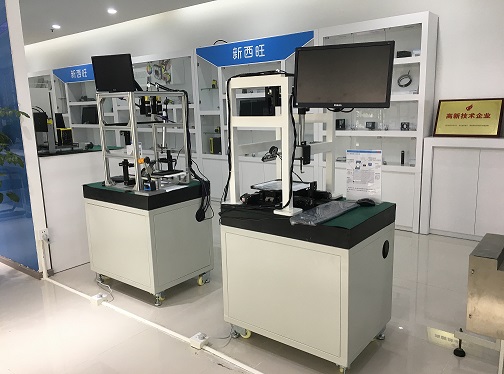Machine vision can allowautonomous driving to drive safer on the road, allowcrops to grow healthier, and allowrobots to act as good helpers in our lives.

Machine vision has broad application fields in industry, and its core functions include: measurement, detection, identification, positioning, etc. Its industrial chain can be divided into upstream component-level market, midstream system integration and complete machine equipment market, and downstream application market. In the upstream of machine vision, there are software and hardware providers such as light sources, lenses, industrial cameras, image capture cards, and image processing software. In the midstream, there are providers of integration and complete machine equipment. The downstream applications of the industry are wide. The main downstream markets include the electronics manufacturing industry, automobiles, Printing and packaging, tobacco, agriculture, medicine, textile and transportation and other fields.
As the lyrics say, "Let me be your eyes so you can see clearly." For robots, machine vision gives them sophisticated computing systems and processing systems, simulating biological visual imaging and information processing methods, allowing the robot to perform more human-like and flexible operations while simultaneously identifying, comparing, and processing scenes, and generating execution instructions. , and then complete the action in one go.
Rapid advances in machine vision technology are enabling a host of new applications and are helping to drive the needs and technical capabilities of today’s machine vision integrators.
First, consider 3D imaging: machine vision components that capture 3D information of the field of view are more readily available. These devices vary widely in imaging methods and implementation techniques. Integrators can use these devices for a variety of applications, including high-precision surface analysis, 3D part and feature measurement, and inspection using 3D image data instead of 2D grayscale information. There is also the latest robot vision guidance. In robot guidance, random products or even mixed and randomly stacked products can be picked out and grabbed by the gripper.
Second, hyperspectral and multispectral imaging is a relatively new technology. These cameras collect multiple (sometimes hundreds) images of a single scene, each with different narrow-bandwidth spectral information. In the hands of an integrator familiar with the technology, applications such as discrete spectral analysis of materials and even chemical composition can be completed online. Many industries such as food, pharmaceutical and recycling can benefit from this detection capability.
Third, many industrial applications require high-speed imaging and processing. Line scan is a common technique to achieve higher imaging rates at high resolution, but the integration of these components can be more complex than for common area imaging applications. Likewise, high-speed imaging and processing are tasks that require skilled integration.
Finally, deep learning is becoming more and more popular. While machine vision isn't entirely new, machine learning and its latest implementation, deep learning, are the latest buzzwords in the industry. This technology shows great potential in many application areas, but it requires a skilled integrator to determine the feasibility and implementation parameters of deep learning for a specific task.
Statement: Part of the content of this article comes from the Internet and is for readers’ academic communication purposes only. Article belongs to the original author. If there is anything inappropriate, please contact us for deletion.
Phone:028-62705808
Fax:028-62705808
Mobile Phone:18215640190
Email:sales@cdxiwang.com
Address:2-8-6, Chen Electric Technology Innovation Park, 68 Shuangbai Road, High-tech West District, Chengdu